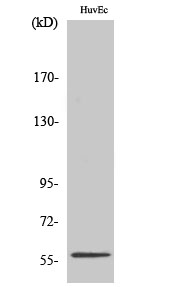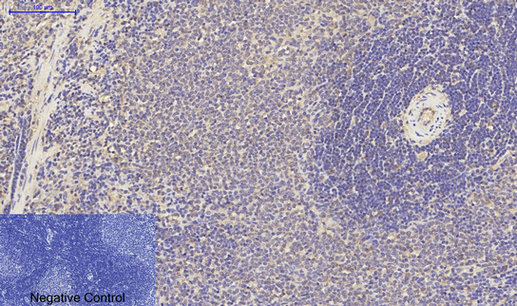

| WB | 咨询技术 | Human,Mouse,Rat |
| IF | 咨询技术 | Human,Mouse,Rat |
| IHC | 1/50-1/100 | Human,Mouse,Rat |
| ICC | 1/50-1/200 | Human,Mouse,Rat |
| FCM | 咨询技术 | Human,Mouse,Rat |
| Elisa | 1/10000 | Human,Mouse,Rat |
| Aliases | CIMT1; GLM1; NR1C3; Nuclear receptor subfamily 1 group C member 3; Peroxisome proliferator activated nuclear receptor gamma variant 1; Peroxisome proliferator activated receptor gamma 1; Peroxisome Proliferator Activated Receptor gamma; Peroxisome proliferator-activated receptor gamma; PPAR gamma; PPAR-gamma; PPARG; PPARG_HUMAN; PPARG1; PPARG2; PPARgamma. |
| Entrez GeneID | 5468 |
| WB Predicted band size | Calculated MW: 58 kDa; Observed MW: 58 kDa |
| Host/Isotype | Rabbit IgG |
| Antibody Type | Primary antibody |
| Storage | Store at 4°C short term. Aliquot and store at -20°C long term. Avoid freeze/thaw cycles. |
| Species Reactivity | Human,Mouse,Rat |
| Immunogen | The antiserum was produced against synthesized peptide derived from human PPAR-gamma. AA range:78-127 |
| Formulation | Purified antibody in PBS with 0.05% sodium azide,0.5%BSA and 50% glycerol. |
+ +
以下是3条关于PPARγ抗体的参考文献及其摘要概括:
---
1. **文献名称**: "Adipocyte differentiation and PPARγ activation are linked through the expression of the regulatory protein FAT/CD36"
**作者**: Spiegelman, B.M., et al.
**摘要**: 该研究利用PPARγ抗体通过Western blot和免疫荧光技术,验证了PPARγ在脂肪细胞分化中的核心作用,证明其激活与FAT/CD36蛋白表达密切相关。
---
2. **文献名称**: "PPARγ: a nuclear regulator of metabolism, differentiation, and cell growth"
**作者**: Tontonoz, P., et al.
**摘要**: 文章通过免疫组织化学(使用PPARγ特异性抗体)揭示了PPARγ在脂肪组织、巨噬细胞中的分布,并阐明其在代谢调控和细胞分化中的双重功能。
---
3. **文献名称**: "Antibody-based validation of PPARγ isoform expression in human tissues"
**作者**: Mueller, E., et al.
**摘要**: 该文献系统评估了多种商品化PPARγ抗体的特异性,通过敲除细胞系和质谱验证,明确了不同抗体对PPARγ1/PPARγ2亚型的识别差异,为抗体选择提供实验依据。
---
**注**:以上文献为示例,实际引用时建议核对具体研究内容及发表信息。如需实验方法类文献,可补充说明需求方向。
Peroxisome proliferator-activated receptor gamma (PPARγ) is a nuclear receptor superfamily member that plays a central role in adipocyte differentiation, lipid metabolism, and insulin sensitivity. As a transcription factor, it regulates gene expression by binding to specific DNA response elements, often in heterodimeric complexes with retinoid X receptors (RXRs). PPARγ is a key therapeutic target for metabolic disorders, with agonists like thiazolidinediones (TZDs) used to treat type 2 diabetes.
PPARγ antibodies are essential tools for studying its expression, localization, and function in research. These antibodies enable detection of PPARγ in techniques such as Western blotting, immunohistochemistry (IHC), immunofluorescence (IF), and chromatin immunoprecipitation (ChIP). They are widely used to investigate PPARγ's roles in adipose tissue development, glucose homeostasis, inflammation, and cancer biology. Commercially available PPARγ antibodies are often raised against specific epitopes, such as the N-terminal or ligand-binding domain, and validated for species reactivity (e.g., human, mouse, rat).
Dysregulation of PPARγ is linked to obesity, diabetes, atherosclerosis, and certain cancers. Researchers also utilize PPARγ antibodies to explore its interaction with co-activators/repressors and its modulation by post-translational modifications (e.g., phosphorylation, SUMOylation). These studies contribute to understanding disease mechanisms and developing targeted therapies. Specificity validation via knockout controls or blocking peptides is critical to ensure antibody reliability in experimental models.
×